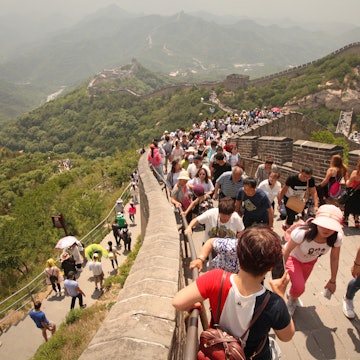
The 10 best things to do in Tianjin, China


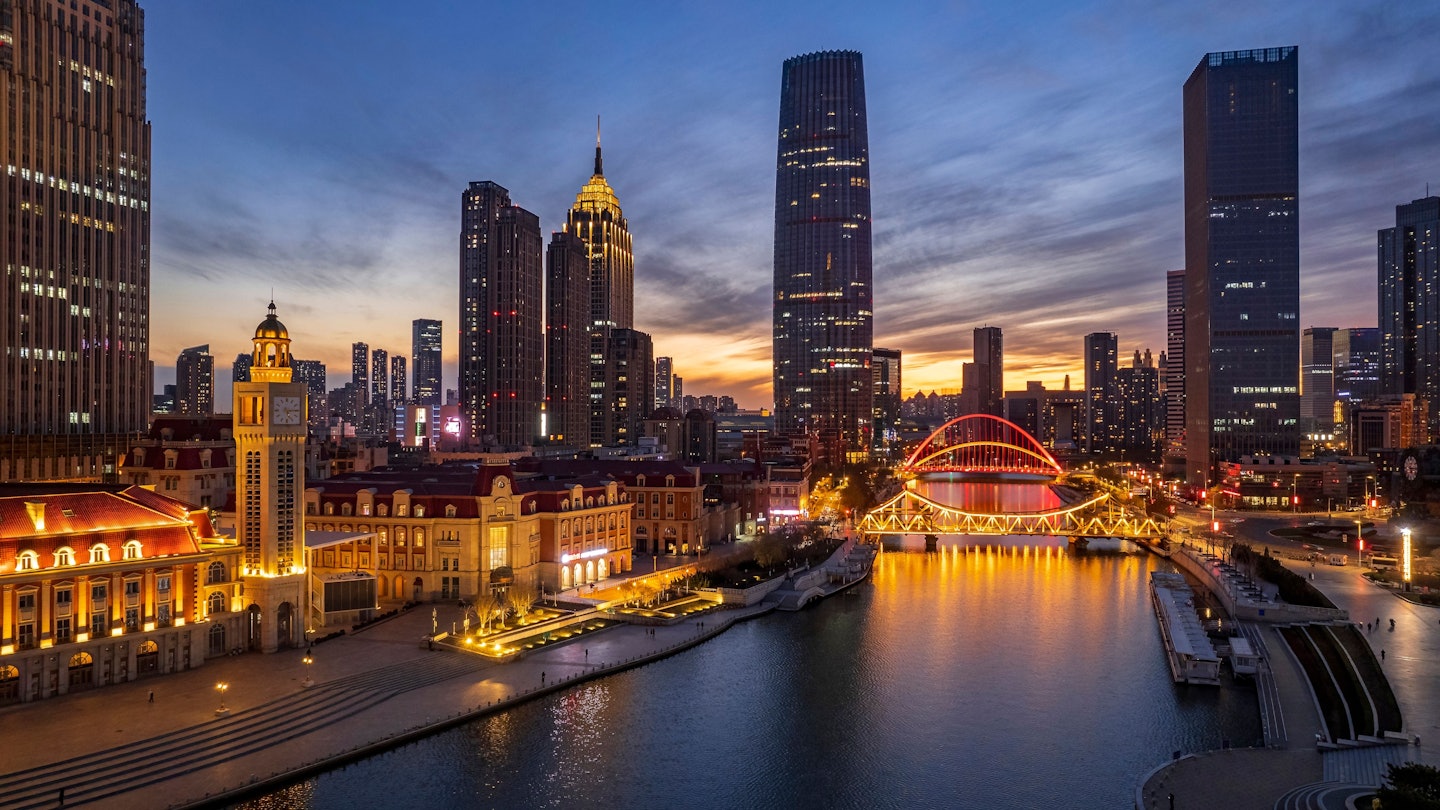
The city of Tianjin blends Chinese modernity with historical influences. Wirestock Creators/Shutterstock
Just southeast of Beijing, the city of Tianjin plays little brother to the nation’s capital, yet this energetic port city is actually a mighty metropolis of 15 million people, straddling the Haihe River and abutting one of the largest seaports in the world. Bullet trains run here from Beijing in as little as 30 minutes, so the city makes an easy day trip from the capital, but with growing air connections to cities across Asia, Tianjin is also a potential first port of call for a trip through northern China.
During the colonial period, Tianjin stood at the crossroads of Chinese-Western relations. As European colonial powers became ever more ambitious in their plans for the Middle Kingdom, tensions bubbled over, and the Battle of Tientsin (Tianjin) in 1900 was one of the most dramatic engagements in the Boxer Rebellion, as local militias faced off against European troops from the Eight-Nation Alliance.
For the first half of the 20th century, European nations governed neighborhoods known as “concessions” in Tianjin, leaving pockets of European-style architecture in their wake. Today, the city offers visitors a dizzying blend of glass skyscrapers, pockets of historic architecture and creative modern monuments. Tianjin covers a vast area, but most travelers stick to the downtown areas that flank the river, where you’ll find an eclectic range of sights, dining and nightlife.
Whether you’re day-tripping from Beijing, or visiting on a dedicated trip to explore the city's sights and dining scene, here are the best things to do in Tianjin.
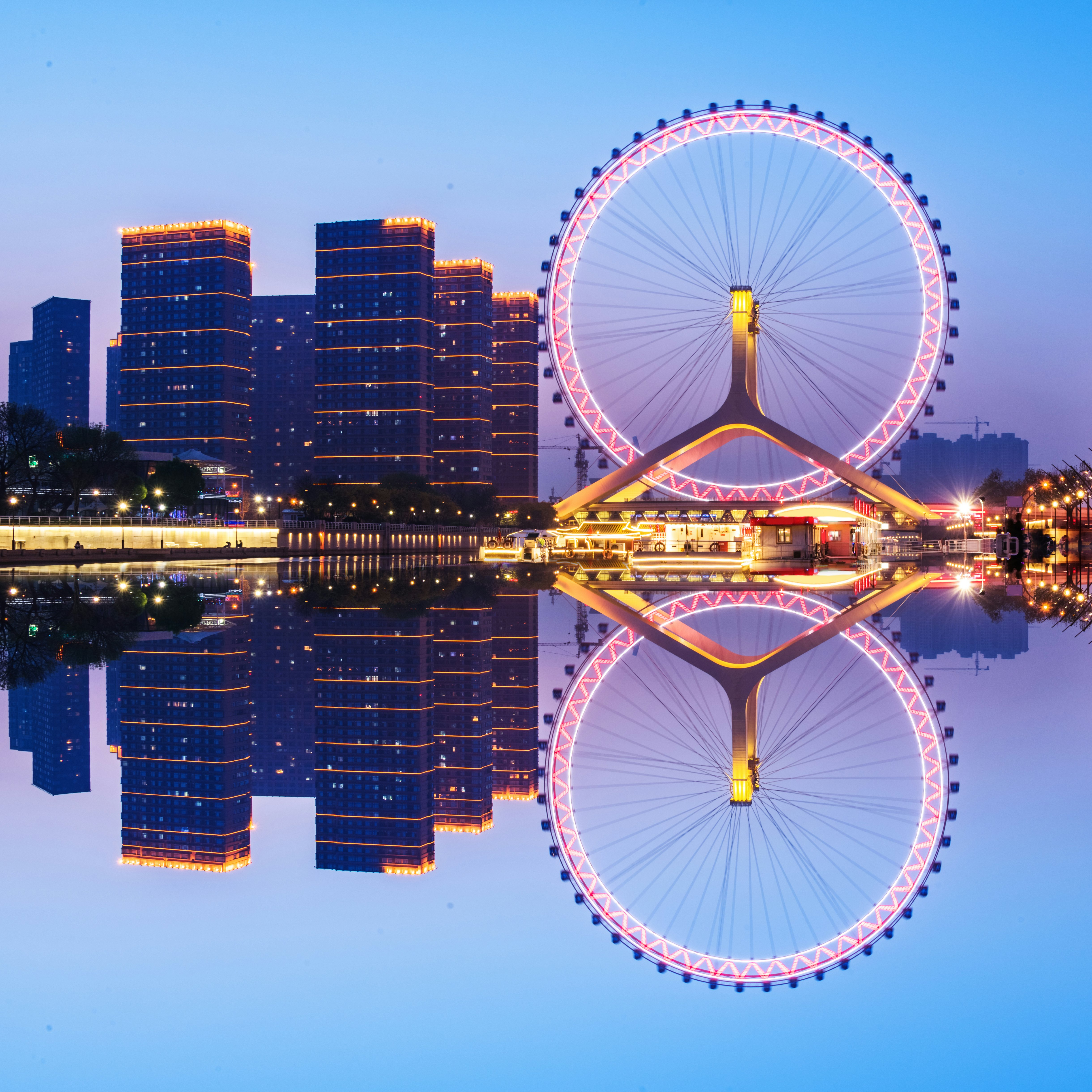
1. Gaze down from the Tianjin Eye
The city’s most iconic structure is the Tianjin Eye (Tianjin Zhiyan), an ivory-colored Ferris wheel that rises 120m (394ft) over the Haihe River. The Eye is affixed to the Yongle Bridge and straddles the motor traffic and grey waters below. Come for the views – from the passenger carriages, you can look out over both riverbanks and a forest of modern high-rises, putting the city into perspective.
This skyscraping wheel closely mimics the London Eye, right down to the air-conditioned pods that slowly rotate passengers into the air. The attraction is a fairly recent addition to the skyline, having been erected in 2008, but it has come to represent the spirit of modern Tianjin. The wheel is attached to two wishbone-shaped supports, which gleam on sunny days, and the latticed circumference is lit up at night, reflecting beautifully in the river.
Planning tip: Lines at the Tianjin Eye can get long, especially on smog-light days, but the 64 pods can carry more than 700 visitors per hour; come before the lines open at 9:30am to beat the rush (the wheel is closed Mondays).
2. Eat your way through Tianjin’s Italian Style Town
It’s strange to think that a Chinese city would have its own “Little Italy,” but Italian Style Town (Tianjin Yi Zujie) is easily the most attractive district in Tianjin, and the best preserved of Tianjin’s European concessions. The neighborhood starts a few blocks from the main train station, just north of the Haihe River, and its brick pavements and awning-covered restaurants look like they were taken from a Tuscan quartiere.
Most of the buildings in the former Italian quarter are terraced houses with balconies and decorative windows, and many have been converted into restaurants and novelty shops. This area was one of the most prosperous European concessions of the early 20th century, when these blocks fell under the jurisdiction of the Italian government.
At one end of Ziyou Ave stands the Century Clock, a 40m-tall (131ft) sculpture crafted from black metal. The steampunk-like design includes animals from the Chinese zodiac and a sun with a human face. At the far end of Ziyou Ave stands Marco Polo Square, a circular plaza centered on an angelic sculpture and fountain, with Marco Polo’s bearded face carved into the stone below.
This is a great part of town for dining, with plenty of European cuisines represented, particularly along Ziyou Ave. Venezia Club Ristorante has served classic Italian fare and proper pizzas for 30 years, and every room is filled with family photos and knickknacks. French food gets its moment at La Seine, where ornate French dishes are served along with international wines and exquisite desserts.
For German-style beers on tap, meaty mains, and a lively beerhall vibe, head to Love Bavaria Bräuhaus. At El Flamenco, there’s a hint of fiesta in the air, with inventive Spanish dishes served up in a stately brick building (if you don’t want a full meal, enjoy tapas or sip sangria at the bar).
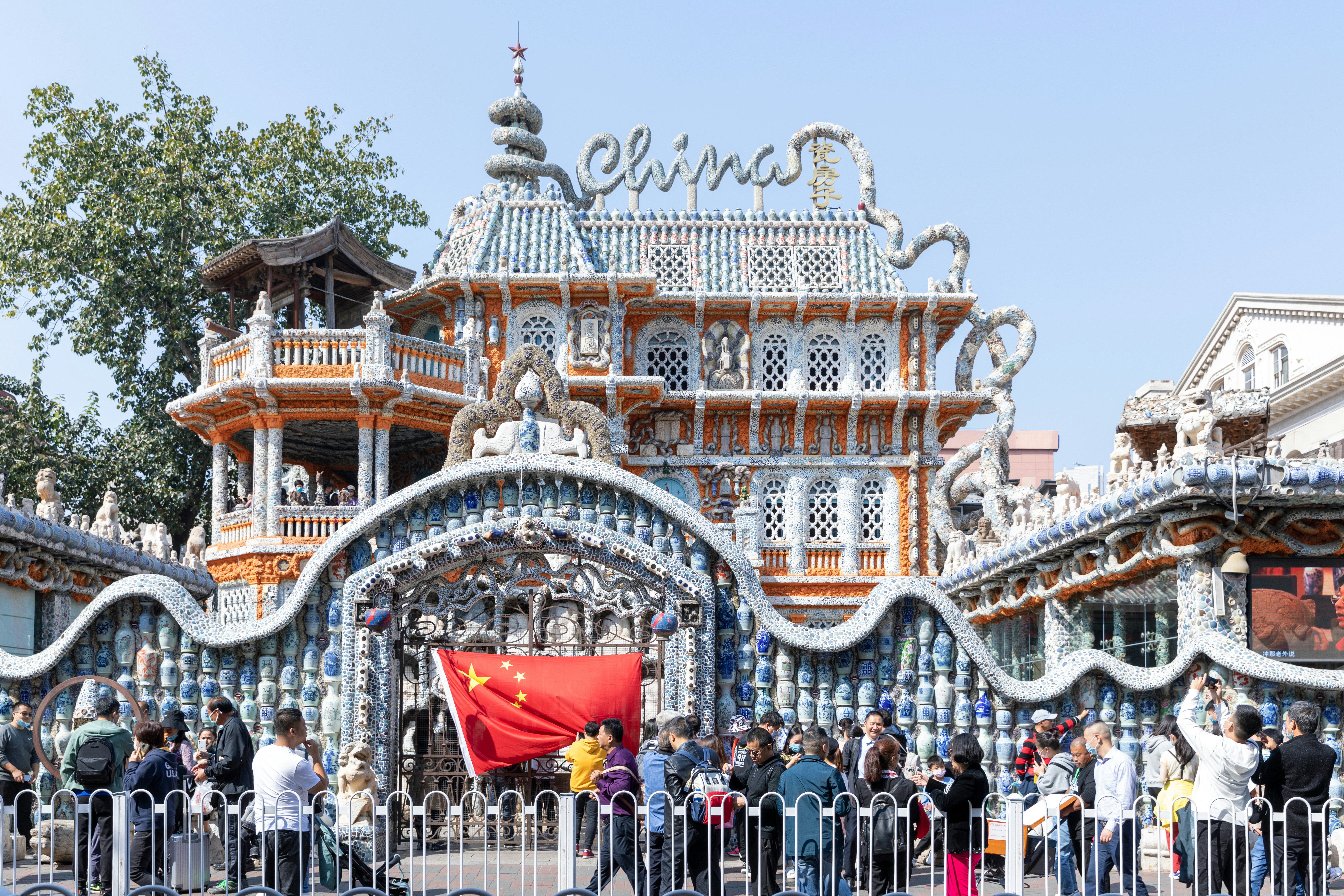
3. Marvel at the Porcelain House
The Porcelain House (Cifangzi) is more than just a museum dedicated to ceramics. This century-old mansion is largely made of porcelain, with pots, vases and bowls built directly into its walls. It’s a museum that is as remarkable on the outside as on the inside.
Porcelain is one of the most famous Chinese crafts – the production of this high-grade ceramic material dates back more than 3000 years and its origins are so legendary that Europeans routinely refer to porcelain as “china.” Yet most porcelain is displayed on shelves or in cabinets, set aside for special occasions, not used as a construction material.
The Porcelain House began life as a French-style residence in the 1920s, before it was purchased by local businessperson Zhang Lianzhi in 2002. An avid art collector, Zhang renovated the house, covering its walls with several hundred million fragments of porcelain, most of them hundreds of years old. Rows of vases stud the exterior, mosaics decorate the walls and stairwells and ceilings are encrusted in blue-and-white patterns – it's quite a spectacle.
Planning tip: The house is impossible to miss with its playful rooftop sign marked “China” – just stroll along Chifeng Ave and look upward.
4. Uncover the city's history at Tianjin's museums
South of the city center, the impressive five-floor Tianjin Museum has over 200,000 objects in its collection, ranging from oracle bones and an excellent inkstone exhibit to artefacts and documents relating to the city's historical entanglements with European powers. The 3rd floor, which focuses on Tianjin's development as a modern city from the Opium Wars onward, is a highlight.
The museum is part of a landscaped park complex called Wenhua Zhongxin that includes a shopping center with places to eat and other free-to-enter museums, including the Tianjin Art Museum and Tianjin Natural History Museum, set inside an all-glass, stingray-shaped building, which displays an impressive collection of dinosaur skeletons.
Planning tip: The museum is right by Wenhua Zhongxin metro station; turn right out of Exit K and head to the far side of the lake. As is often the case in China, the museums are closed on Mondays.
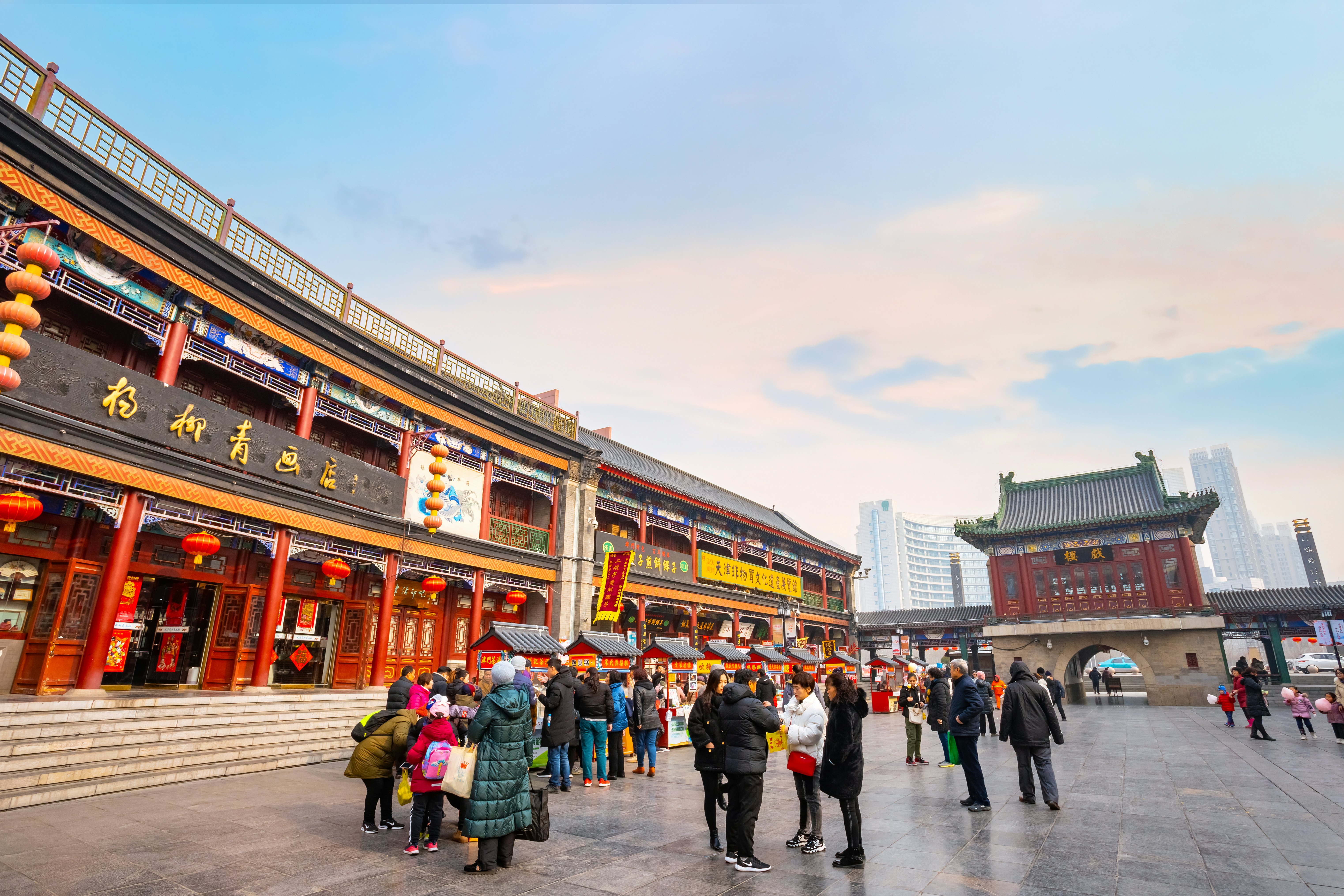
5. Stroll along Ancient Culture Street
Ancient Culture Street (Guwenhua Jie) sits at the historic heart of Tianjin and it's a favorite destination for window shoppers. This is your classic Chinese urban arcade, with blocks of tightly packed shops and dining options. Street vendors sell every imaginable ware, from Buddha statuettes to replica opium pipes. Ancient Culture Street is closed to motor traffic, making this a great place to promenade.
In one plaza stands an ivory-white statue of Mazu, the Chinese goddess of the Sea – this port city has two formidable sculptures of her, one here, and one in the Binhai Mazu Cultural Park. Behind the goddess, you’ll find the Queen of Heaven Palace, an understated temple and one of the oldest buildings in Tianjin. The palace contains the Tianjin Folk Museum (Tianjin Minsu Bowuguan), which is free to enter and well stocked with historic photos and artefacts.
Planning tip: On the northern edge of Ancient Culture Street is the Yuhuang Pavilion (Yuhuangge), a temple that dates back to the 14th century and honors the Jade Emperor, a central figure in Taoist cosmology. The pavilion is notable for its sweeping green roofs and peaceful walkways outside.
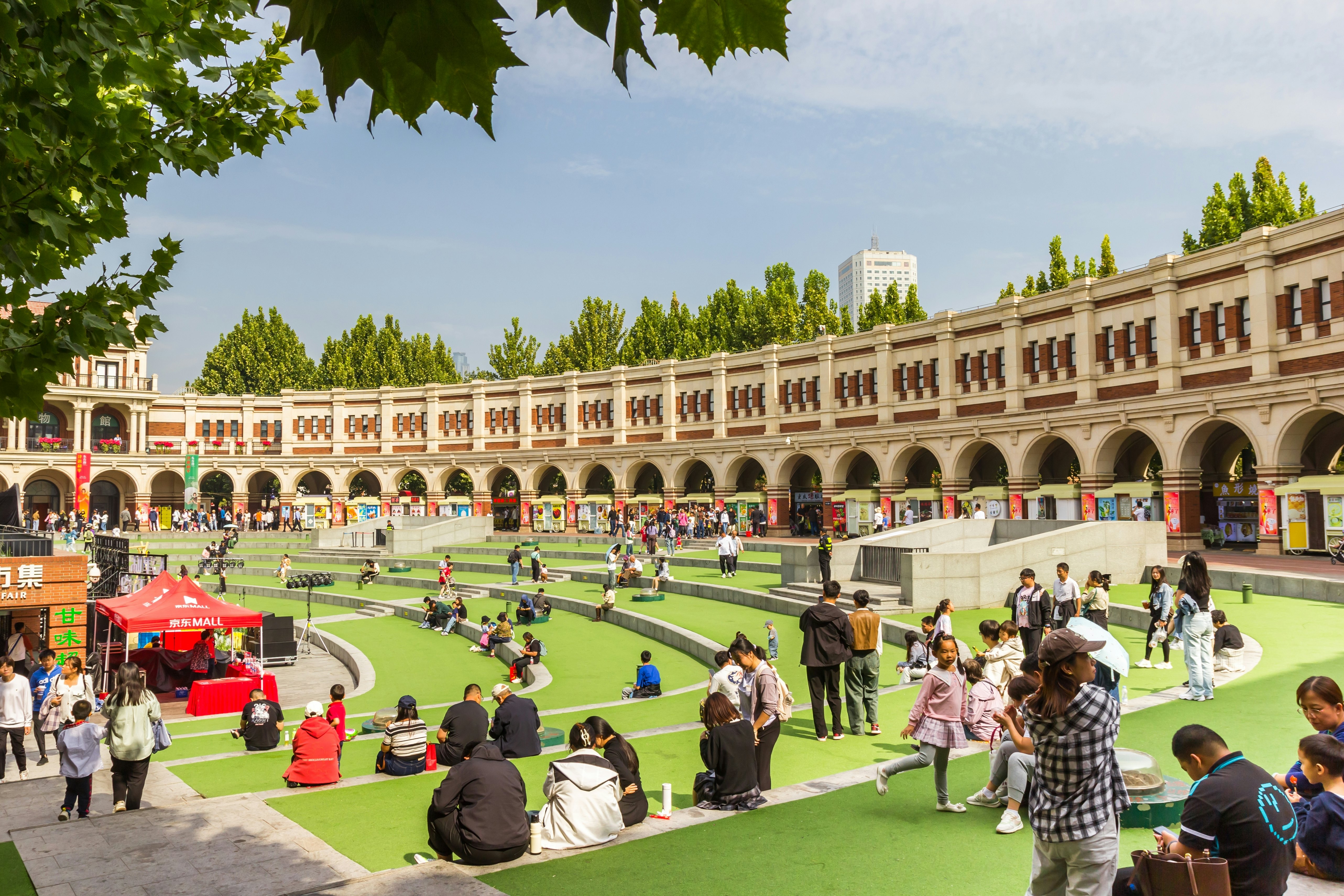
6. Soak in the atmosphere of the Five Great Avenues District
For a glimpse of the legacy of Tianjin’s 20th-century European concessions, take Line 1 to Xiaobailou Metro Station in the Five Great Avenues district (Wudadao). Directly outside stands Tianjin Concert Hall, a domed masterpiece from 1922, with neoclassical pillars and a hedge-lined walkway out front. All sorts of performances take place here, in an auditorium that seats nearly 900 people.
Cross Nanjing Rd and walk about 1km (0.6 miles) west to the Resists Earthquakes Monument, commemorating the hundreds of thousands of people who died in the 1976 Tangshan earthquake, which measured 7.6 on the Richter scale. Head south on Hebei Rd, then left on Chongqing Ave to view Prince Qing’s Mansion (Qingwangfu); this lavish estate was constructed in the 1920s and has since become a luxury hotel.
Double back to Hebei Rd to visit the former Minyuan Stadium (Minyuan Guangchang). This section of Tianjin was once ruled by the British, and the Minyuan complex was designed by Eric Liddell, one of the historic athletes represented in the film Chariots of Fire (1981), who was born in Tianjin. It has been converted into a public park and houses several museums, with exhibits about Liddell and his legacy.
Planning tip: If you’ve worked up an appetite from all this walking, Minyuan Stadium is packed with food stalls.
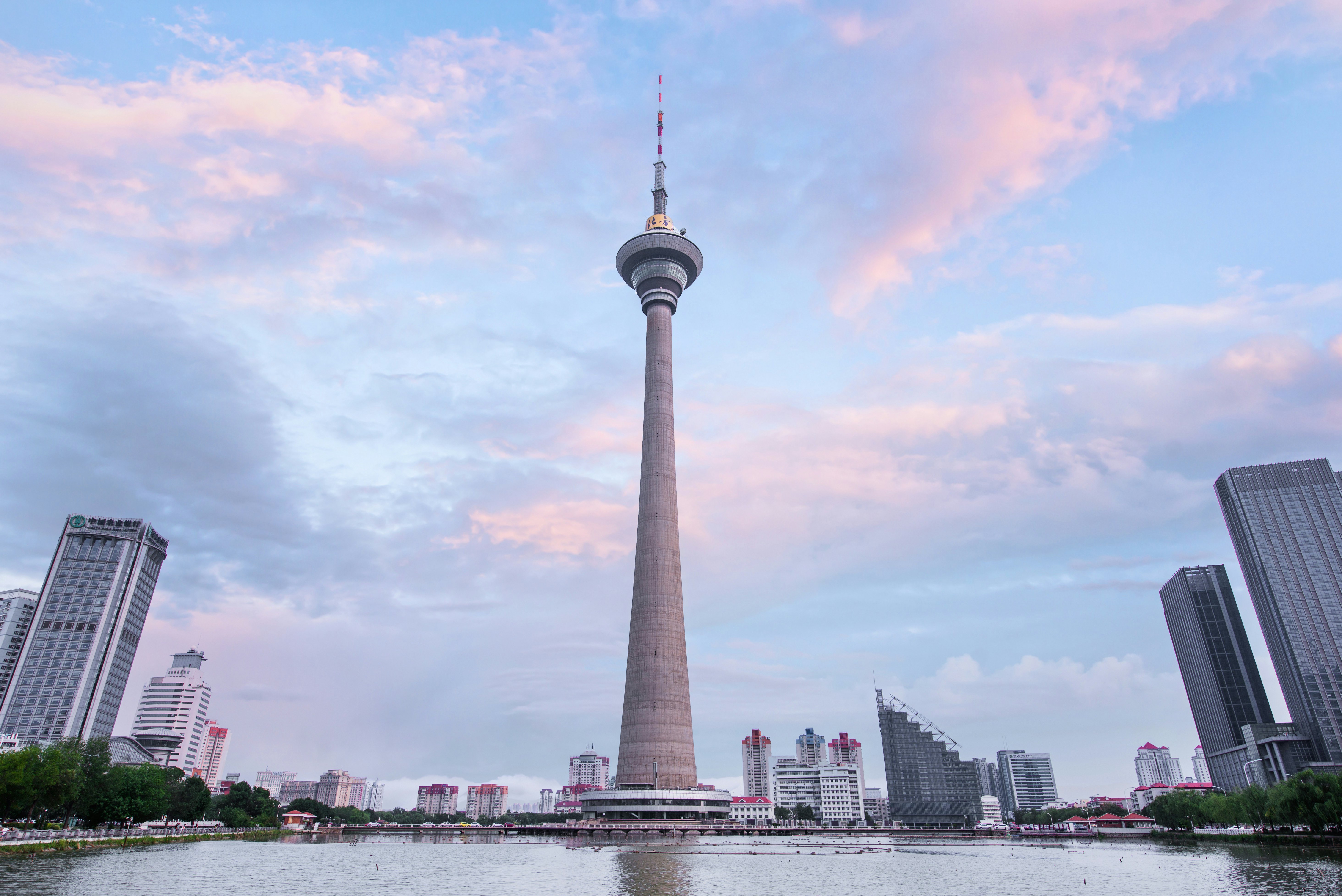
7. Ascend the Tianjin Radio and Television Tower
Soaring to 415m (1362ft), the Tianjin Radio and Television Tower looks like a skinny scepter planted in the middle of Tianta Hu Lake. Although it’s the 8th-tallest freestanding tower in the world, this skyscraping landmark isn’t nearly as famous as the Oriental Pearl TV Tower in Shanghai, and it’s locally overshadowed by the Tianjin Eye.
The Tianjin Radio and Television Tower is worth a visit, though, because of its 253m-high (1158ft) observation deck, which offers 360-degree views of the skyline. A small exhibit illustrates the tower’s engineering and its relationship to similar freestanders around the globe. For an additional fee, you can access the cafe just above the viewing deck; the menu is limited and pricey, but you can enjoy the novelty of a rotating floor.
Planning tip: The Tianjin Radio and Television Tower is about 7km (4.3 miles) from the Tianjin Train Station. The trip takes about 30 minutes by taxi, or you can take Metro Line 3 to Tienta Station, which will put you in the tower’s shadow.
8. Have a feast on Nanshi Cuisine Street
Exploring Tianjin can be hungry work. If you want a smorgasbord of dining options, head to Nanshi Cuisine Street (Nanshi Shipin Jie), around 2km (1.2 miles) from Ancient Culture Street and Marco Polo Square. This indoor food court has a high glass ceiling and around 100 food stalls. You can wander from hot plate to chafing dish and sample a wide range of snacks and larger dishes, including fish pulled fresh from the tank and cooked on the spot.
Planning tip: Seating is limited, but Nanshi is a cozy escape on rainy days. On a dry day, consider buying some dishes to take out for a picnic in Nanshi Park across the street.
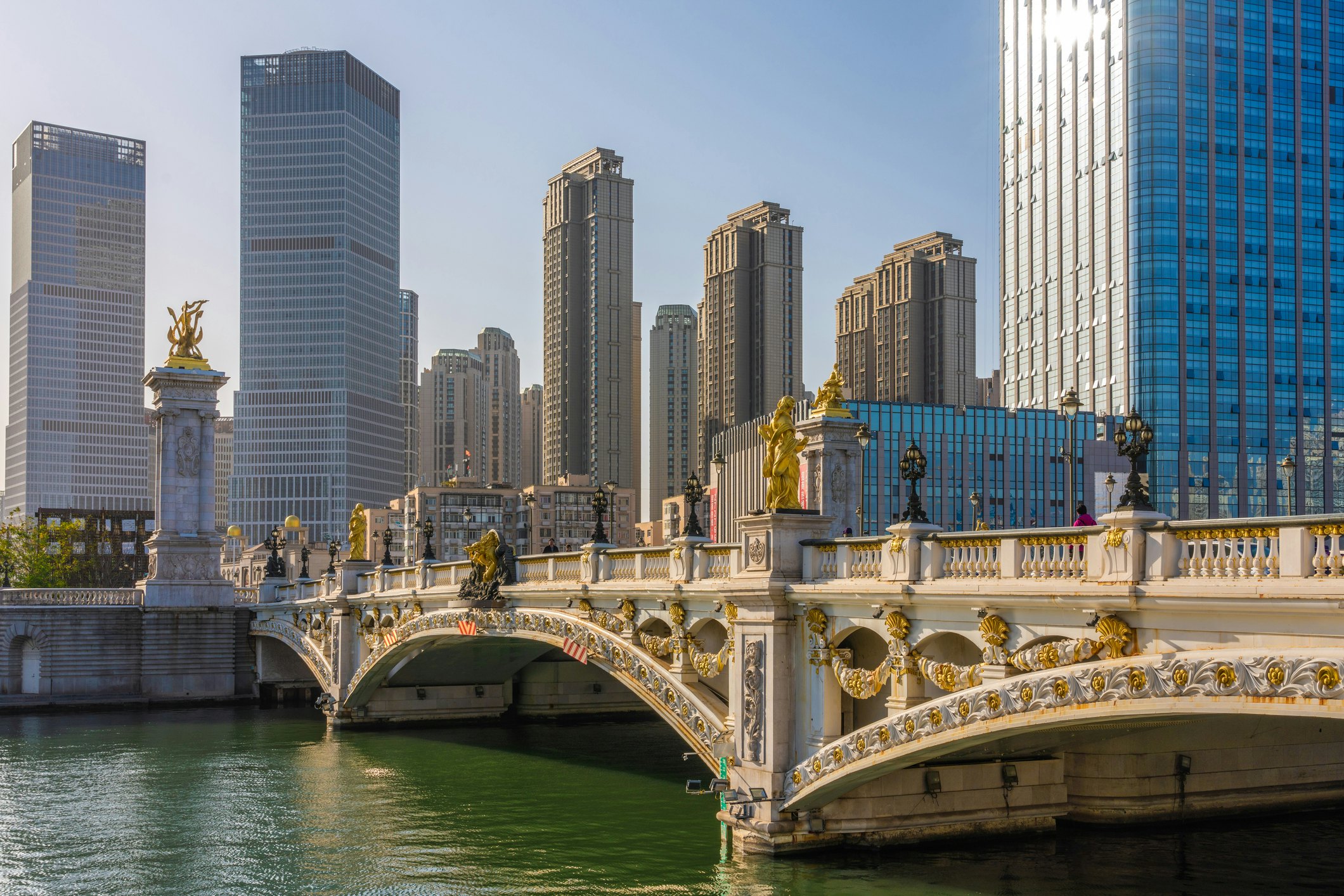
9. Admire Tianjin’s bridges
Eye-catching bridges hop back and forth across the Haihe River, including vintage museum pieces from the European concession era. Just southeast of the center, the steel-framed Jiefang Bridge is a counterweighted bascule bridge from 1923; newlyweds often take wedding photos here. Around the next bend in the river is the Chifeng Bridge from 2008, a sweeping suspension bridge with a central pylon and triangular splay of cables, nicknamed “the ship” for its sail-like shape.
On the edge of the old center, the Bei’an Bridge was built in 1939, and studded with neoclassical statues to replicate the Pont Alexandre III in Paris. Further north, the pedestrian Jintang Bridge dates from 1906, and it’s elegantly lit up at night, creating a romantic mood. A few blocks north, the Stone Lion Forest Bridge is a European-style structure, decorated with more than 1000 Chinese lion sculptures.
Planning tip: Admire the bridges from the water on a Haihe River cruise; boat trips start from near the main train station, close to Ancient Culture Street and near the Tianjin Eye.
10. Get a taste of Old Tianjin in Yangliuqing
The old canal-side market town of Yangliuqing, 20km (miles) west of Tianjin, has been spruced up for tourists and is home to an attractive collection of courtyards, temples, alleyways and squares – some original, and some constructed anew to appeal to visitors. The centerpiece of Yangliuqing is the Shi Family Residence, a warren-like merchant’s home of 278 rooms, built in 1875.
The area immediately behind the mansion contains more courtyards and former temples. There are no residents living here, however, so the place can have a bit of a ghost-town atmosphere, but you can explore the historic buildings and take boat rides on the canal.
Planning tip: To get to Yangliuqing, take bus 824 from Tianjin Train Station and get off at the Yangliuqing Guzhen Shijia Dayuan stop, then walk back over the river.
This article was adapted from the China guidebook published in August 2025.











